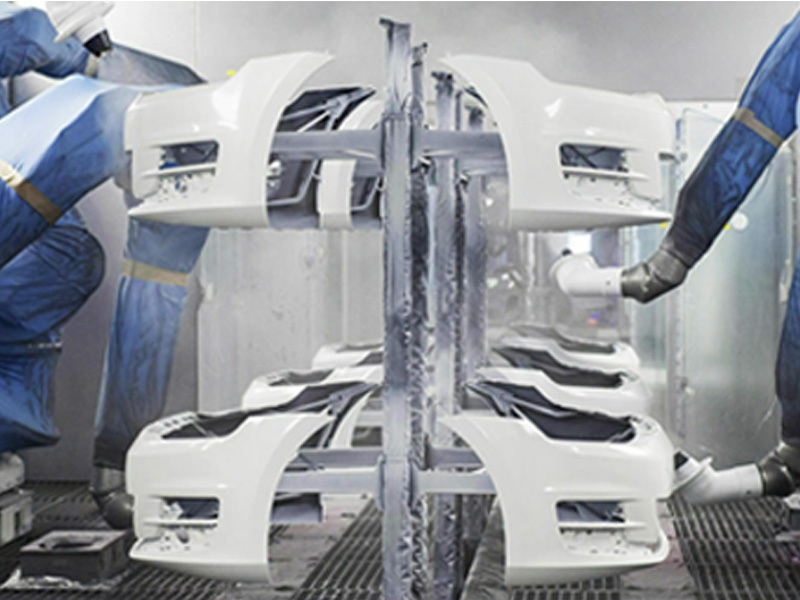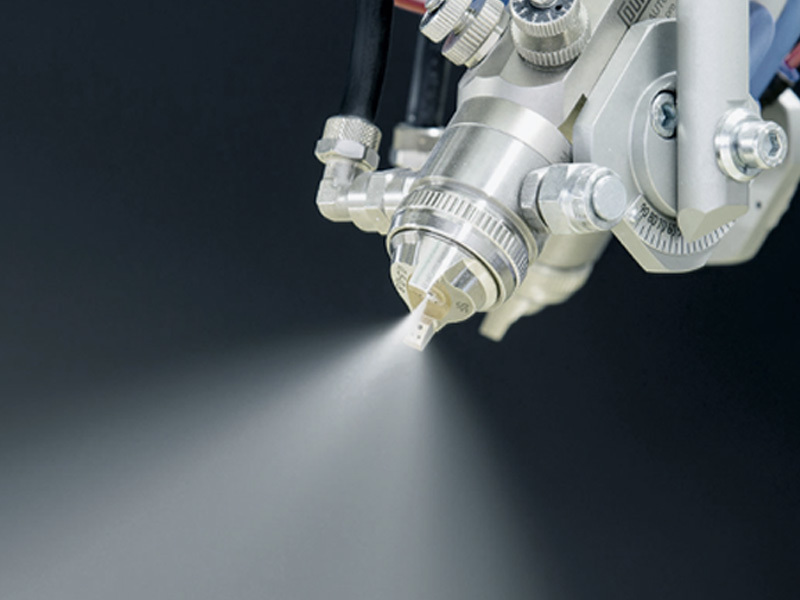Unlocking Safety: The Importance of an Explosion Proof Spray Production Line
Release time:
2025-06-24
Unlocking Safety: The Importance of an Explosion Proof Spray Production Line Table of Contents 1. Introduction to Explosion Proof Spray Production Lines 2. Understanding Explosion Hazards in Spray Applications 3. Components of an Explosion Proof Spray Production Line 4. Benefits of Implementing Explosion Proof Systems 5. Compliance and Regulatory Standards 6. Maintenance a

Unlocking Safety: The Importance of an Explosion Proof Spray Production Line
Table of Contents
- 1. Introduction to Explosion Proof Spray Production Lines
- 2. Understanding Explosion Hazards in Spray Applications
- 3. Components of an Explosion Proof Spray Production Line
- 4. Benefits of Implementing Explosion Proof Systems
- 5. Compliance and Regulatory Standards
- 6. Maintenance and Best Practices for Safety
- 7. The Future of Spray Production Technology
- 8. Conclusion
- 9. FAQs about Explosion Proof Spray Production Lines
1. Introduction to Explosion Proof Spray Production Lines
In industries where flammable materials are prevalent, ensuring safety is of utmost importance. **Explosion-proof spray production lines** are specialized systems engineered to prevent explosions and protect workers and facilities. By incorporating advanced technology and design principles, these systems minimize risks associated with volatile substances used in spray applications.
Understanding the significance of explosion-proof systems is essential for manufacturers seeking to optimize safety and efficiency while adhering to stringent industry standards.
2. Understanding Explosion Hazards in Spray Applications
Spray applications often involve flammable liquids or aerosols that can create hazardous situations. **Explosion hazards** are typically identified by the presence of combustible dust, flammable gases, or vapors. Common industries faced with these risks include automotive, aerospace, and manufacturing.
Recognizing the potential for explosions involves understanding factors such as:
- **Material Properties**: Flammability of substances used in spray processes.
- **Environmental Conditions**: Temperature, humidity, and ventilation that can influence explosion risk.
- **Process Variables**: Equipment and operational methods that may contribute to hazardous situations.
Implementing explosion-proof equipment is a proactive approach to mitigate these dangers and safeguard personnel.
3. Components of an Explosion Proof Spray Production Line
An explosion-proof spray production line comprises several critical components designed to work in unison to enhance safety. Here are some essential elements:
3.1. Explosion-Proof Enclosures
These sturdy structures house electrical components and other sensitive equipment. Built to withstand high pressures, they prevent ignition of flammable gases and vapors that could lead to explosions.
3.2. Advanced Ventilation Systems
Proper ventilation is crucial in dispersing hazardous vapors. **Explosion-proof ventilation systems** ensure that any accumulated flammable gases are safely exhausted, maintaining a safe working environment.
3.3. Specialized Spray Equipment
Using non-sparking and corrosion-resistant materials, spray equipment is designed to minimize the risk of ignition. This includes spray guns, pumps, and valves specifically engineered for explosive environments.
3.4. Safety Interlocks
Safety interlocks prevent the operation of equipment if hazardous conditions are detected. These systems are vital in maintaining safety protocols and ensuring that machinery only operates under safe conditions.
4. Benefits of Implementing Explosion Proof Systems
The advantages of utilizing explosion-proof spray production lines are vast and contribute significantly to overall operational success.
4.1. Enhanced Safety for Workers
The primary goal of explosion-proof systems is to protect personnel from potential hazards. By reducing the risk of explosions, workplaces can provide a safer environment, leading to improved employee morale and productivity.
4.2. Increased Operational Efficiency
Implementing explosion-proof systems can streamline operations by minimizing downtime caused by accidents or safety audits. A well-designed system enhances workflow and efficiency in production processes.
4.3. Reduced Insurance Costs
Businesses that prioritize safety and invest in explosion-proof systems often see reduced insurance premiums. Insurance companies recognize the lower risk associated with compliant and well-maintained facilities.
4.4. Compliance with Industry Standards
Explosion-proof systems facilitate adherence to various safety regulations and standards, such as OSHA and NFPA, ensuring companies avoid penalties and legal issues.
5. Compliance and Regulatory Standards
Companies operating in hazardous environments must comply with a range of regulations to ensure safety. These include:
5.1. OSHA Regulations
The Occupational Safety and Health Administration (OSHA) sets forth guidelines ensuring that workplaces are safe and healthy. Compliance with OSHA standards regarding explosive atmospheres is essential for businesses.
5.2. NFPA Standards
The National Fire Protection Association (NFPA) provides regulations tailored to fire and explosion prevention. NFPA 33, which covers spray application, outlines requirements for explosion-proof equipment.
5.3. ATEX and IECEx Certifications
In many regions, equipment must meet ATEX (Europe) or IECEx (international) standards to ensure safe operation in explosive atmospheres. Compliance with these certifications is critical for international business operations.
6. Maintenance and Best Practices for Safety
Implementing an explosion-proof spray production line is just the first step; ongoing maintenance and adherence to best practices are crucial for long-term safety.
6.1. Regular Inspections
Routine inspections of equipment and safety systems help identify potential failures before they become dangerous issues. Scheduling regular maintenance checks is vital for ensuring compliance and safety.
6.2. Training and Education
Training employees on the proper use of equipment and safety protocols is essential. Continuous education ensures that all personnel are aware of potential hazards and understand how to operate systems safely.
6.3. Emergency Preparedness Plans
Developing and rehearsing emergency plans ensures that all employees know how to respond to incidents. This preparedness can mitigate damage and injury in the event of an emergency.
7. The Future of Spray Production Technology
Innovation in spray production technology continues to evolve, focusing on safety, efficiency, and environmental responsibility.
7.1. Automation and Smart Technology
The integration of automation and smart technology allows for real-time monitoring of equipment and environmental conditions. This advancement enhances safety by providing immediate alerts about potential hazards.
7.2. Environmentally Friendly Solutions
As industries strive for sustainability, the development of eco-friendly spraying materials and processes is gaining traction. This shift not only reduces environmental impact but also minimizes the risk of explosions.
7.3. Enhanced Data Analytics
Data analytics tools are becoming more prevalent, allowing businesses to analyze performance metrics and predict potential risks. By leveraging data, companies can make informed decisions to enhance safety and efficiency.
8. Conclusion
In conclusion, the importance of implementing an **explosion-proof spray production line** cannot be overstated. By understanding the risks associated with spray applications and investing in specialized systems, businesses can significantly enhance safety, efficiency, and compliance with industry regulations. Embracing these advanced technologies not only protects workers but also contributes to the overall success and sustainability of operations.
9. FAQs about Explosion Proof Spray Production Lines
What is an explosion-proof spray production line?
An explosion-proof spray production line is a specialized system designed to prevent explosions in environments where flammable materials are used, ensuring safety and compliance.
Why are explosion-proof systems necessary?
These systems minimize the risk of explosions, protecting employees and facilities, and ensuring compliance with safety regulations.
What industries typically use explosion-proof spray production lines?
Industries such as automotive, aerospace, and manufacturing often utilize these systems due to the presence of flammable materials.
How can businesses ensure compliance with safety regulations?
Businesses can ensure compliance by investing in explosion-proof systems, conducting regular inspections, and providing employee training on safety protocols.
What are the future trends in spray production technology?
Future trends include automation, smart technology integration, environmentally-friendly materials, and enhanced data analytics for risk management.
By prioritizing safety through the implementation of explosion-proof systems, organizations can protect their workforce while optimizing operational efficiency in a high-risk environment.











